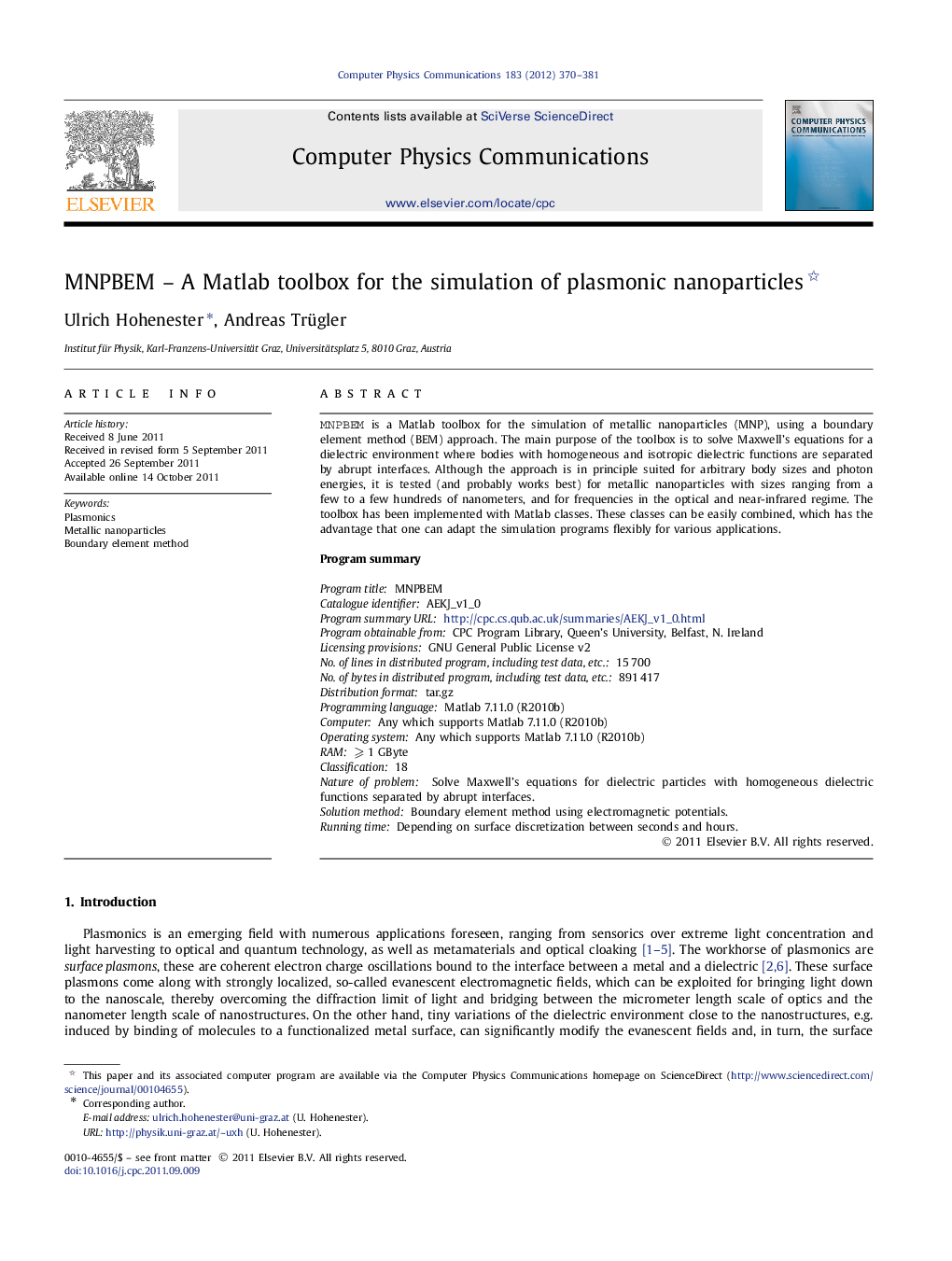| کد مقاله | کد نشریه | سال انتشار | مقاله انگلیسی | نسخه تمام متن |
|---|---|---|---|---|
| 501759 | 863641 | 2012 | 12 صفحه PDF | دانلود رایگان |

MNPBEM is a Matlab toolbox for the simulation of metallic nanoparticles (MNP), using a boundary element method (BEM) approach. The main purpose of the toolbox is to solve Maxwellʼs equations for a dielectric environment where bodies with homogeneous and isotropic dielectric functions are separated by abrupt interfaces. Although the approach is in principle suited for arbitrary body sizes and photon energies, it is tested (and probably works best) for metallic nanoparticles with sizes ranging from a few to a few hundreds of nanometers, and for frequencies in the optical and near-infrared regime. The toolbox has been implemented with Matlab classes. These classes can be easily combined, which has the advantage that one can adapt the simulation programs flexibly for various applications.Program summaryProgram title: MNPBEMCatalogue identifier: AEKJ_v1_0Program summary URL:http://cpc.cs.qub.ac.uk/summaries/AEKJ_v1_0.htmlProgram obtainable from: CPC Program Library, Queenʼs University, Belfast, N. IrelandLicensing provisions: GNU General Public License v2No. of lines in distributed program, including test data, etc.: 15 700No. of bytes in distributed program, including test data, etc.: 891 417Distribution format: tar.gzProgramming language: Matlab 7.11.0 (R2010b)Computer: Any which supports Matlab 7.11.0 (R2010b)Operating system: Any which supports Matlab 7.11.0 (R2010b)RAM: ⩾1 GByteClassification: 18Nature of problem: Solve Maxwellʼs equations for dielectric particles with homogeneous dielectric functions separated by abrupt interfaces.Solution method: Boundary element method using electromagnetic potentials.Running time: Depending on surface discretization between seconds and hours.
► We present a Matlab toolbox for the simulation of plasmonic nanoparticles.
► Maxwellʼs equations are solved in the visible and near-infrared regime using a boundary element method approach.
► The toolbox includes excitations through plane waves and oscillating dipoles.
► The toolbox uses Matlab classes which can be easily adapted for various plasmonics applications.
Journal: Computer Physics Communications - Volume 183, Issue 2, February 2012, Pages 370–381